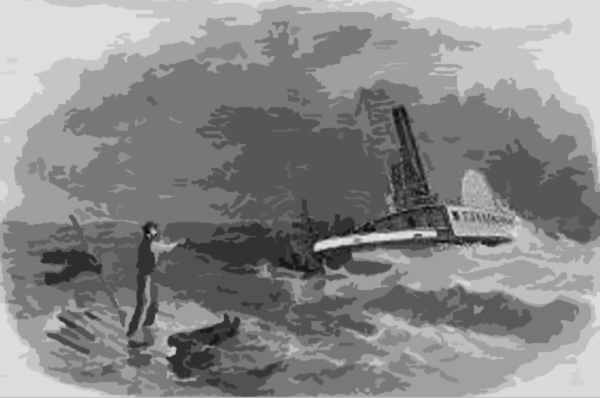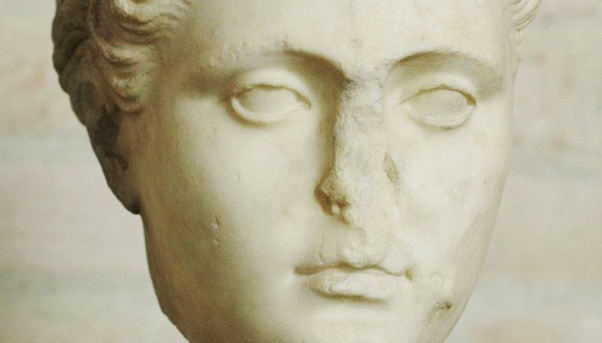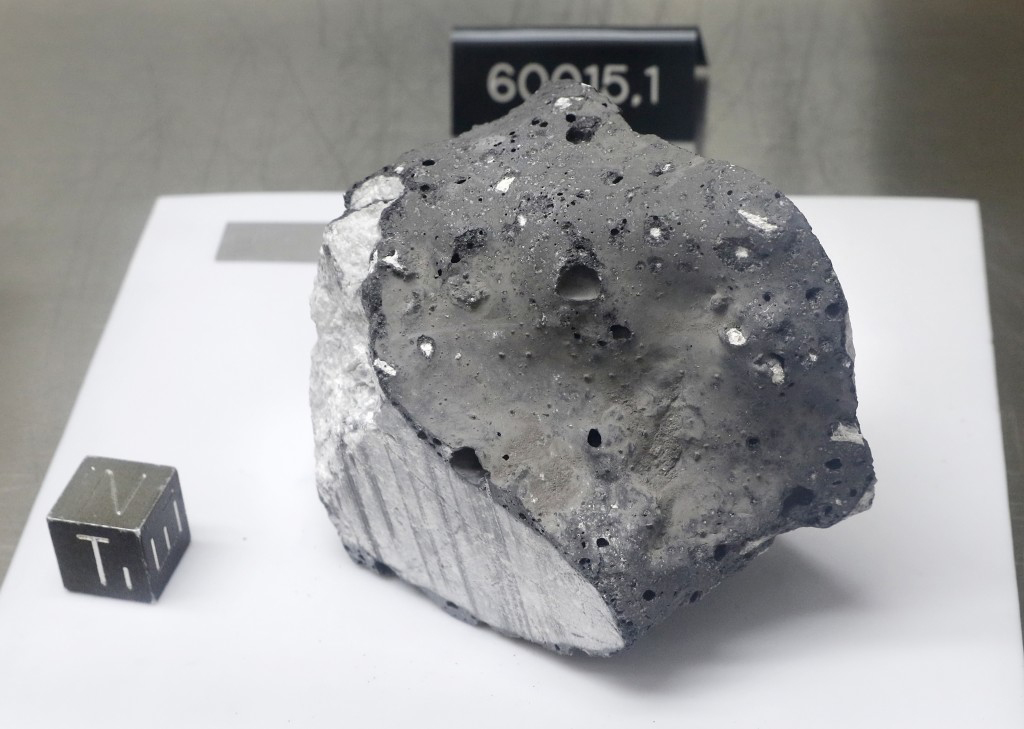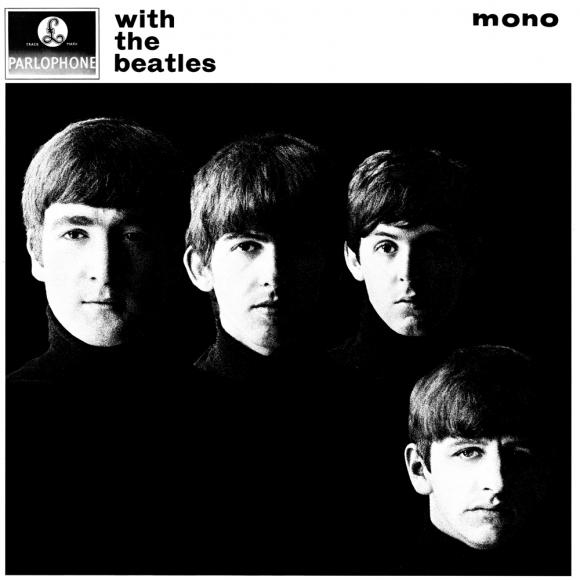
Second Sino-Japanese War - The United States declares war on Japan on December 08, 1941
The United States declares war on Japan: Japan launches a series of military attacks against the western Allies, when the Imperial Navy raids Pearl Harbor on December 8, 1941 (December 7 in U.S. time zones).
On this day, as America’s Pacific fleet lay in ruins at Pearl Harbor, President Franklin Roosevelt requests, and receives, a declaration of war against Japan.
Leaning heavily on the arm of his son James, a Marine captain, FDR walked haltingly into the House of Representatives at noon to request a declaration of war from the House and address the nation via radio. “Yesterday”, the president proclaimed,
“December 7, 1941—a date which will live in infamy—the United States of America was suddenly and deliberately attacked by naval and air forces of the Empire of Japan. No matter how long it may take us to overcome this premeditated invasion, the American people in their righteous might will win through to absolute victory.”
Roosevelt’s 10-minute speech, ending with an oath - “So help us God” - was greeted in the House by thunderous applause and stamping of feet. Within one hour, the president had his declaration of war, with only one dissenting vote, from a pacifist in the House. FDR signed the declaration at 4:10 p.m., wearing a black armband to symbolize mourning for those lost at Pearl Harbor.
On both coasts, civilian defense groups were mobilized. In New York, Mayor Fiorello LaGuardia ordered the rounding up of Japanese nationals, who were transported to Ellis Island and held in custody indefinitely. In California, antiaircraft batteries were set up on Long Beach and the Hollywood Hills.
Reports on supposed spy activity on the part of Japanese Americans began pouring into Washington, even as Japanese Americans paid for space in newspapers to declare unreservedly their loyalty to the United States. The groundwork was being laid for the tragic internment of Japanese Americans, thought a necessary caution at the time but regretted years later as a hysterical and bigoted response.
History.com / Wikipedia / Encyclopedia Britannica / National Archives.gov / Franklin D. Roosevelt Library.org
/ Pearl Harbor Visitors Center.org / National Interest.org
/ Second Sino-Japanese War - The United States declares war on Japan on December 08, 1941 (YouTube) 

Understanding Military Terminology
National Support Element
(DOD) Any national organization or activity that supports national forces that are a part of a multinational force.
See also Multinational Force; Support.
Joint Publications (JP 1) Doctrine for the Armed Forces of the United States

The Old Salt’s Corner
“Tales of Legendary Ghost Ships”
Legend of Eliza Battle
One of the greatest catastrophes ever to occur on the Tombigbee River was the burning of the steamboat Eliza Battle on the night of March 1, 1858, in which between 80 and 90 persons lost their lives.
The night was gloomy and dark with a heavy sleet falling and bitter cold wind blowing. The river was many feet above normal, only the tops of the trees growing on the low banks showing above the water. Then came the alarming cry of fire. This cry was screamingly repeated when one person after another made the horrible discovery that the boat was afire. There was an immediate panic.
In the brisk wind the fire spread rapidly and soon the greater part of the boat was engulfed. Men began to push bales of cotton into the river and try to get their womenfolk on them. Dozens of persons leaped into the river and tried to reach the shore. Many reached and clung to the tops of partially submerged trees. Others got ashore but could render no assistance to those in the treetops, many of whom froze to death during the night.
Captain Stone, master of the Eliza Battle, in desperation ordered the pilot into the bank, but it was found some of the tiller ropes leading to the rudders had burned in two and was almost unmanageable. However, several miles further down the river, the current veered the burning boat close to shore near Wehoeta, a near landing at this point permitting the few persons left aboard to leap off and swim ashore.
Daylight coming shortly afterward, a young man, with only a skiff available sought to rescue persons in treetops up and down the river. About 50 were taken from the treetops in a half frozen condition. They were put in plantation homes and outhouses and others laid on the ground on hay and corn fodder and Negro slaves built huge fired to help them thaw out.
Those rescued, as they regained somewhat of understanding, told grim tales of hearing persons in treetops losing consciousness frozen numbness and falling into the river and drowning. At the Pettigrew plantation at Wehoeta some 80 persons were cared for who had been rescued, only one of who had succumbed from exposure survived.
There were many acts of heroism in this disaster and are always in such emergencies, but it would be useless to try to enumerate them. Men died in efforts to save their loved ones and women died in their efforts to save their children, though fortunately there were few aboard the failed trip of the Eliza Battle.
Stories have been written about the origin of the fire, some that professional gamblers deliberately set fire to the boat when they were pulled off by the captain. Another said the boat’s safe was robbed by two cracksmen and that when leaving they crashed an oil burning lantern on a bale of cotton so the fire would cover their robbery. The most plausible account is that a merrymaking passenger threw a cigar sub on a bale of cotton thinking he was tossing into the river and the fire resulted.
River Boat Daves
/ Wikipedia

“I’m Just Sayin”
“Don't bother just to be better than your contemporaries or predecessors.
Try to be better than yourself.”
“You cannot swim for new horizons
until you have courage to lose sight of the shore.”
“Never be afraid to raise your voice for honesty and truth
and compassion against injustice and lying and greed.
If people all over the world would do this,
it would change the earth.”
~ William Faulkner

“Thought for the Day”
“A great man is made up of qualities that meet or make great occasions.”
“One thorn of experience
is worth
a whole wilderness
of warning.”
“A weed is no more than a flower in disguise,
Which is seen through at once,
if love give a man eyes.”
~ James Russell Lowell

“What I Learned”
“A lot of good arguments are spoiled by some fool who knows what he is talking about.”
“Perpetual worry will get you to one place ahead of time - the cemetery.”
“When you laugh, be sure to laugh at what people do and not at what people are.”
~ Anonymous

Second Hand News (Links to Articles from Week 49 - December 02, 2019 - December 08, 2019)
 Newsweek reporter fired for Trump Thanksgiving story blames editor
• Nadler sets deadline for White House to say if Trump attorneys will participate in impeachment p
• Klobuchar blasts Bloomberg for ‘everyone else sucks’ 2020 campaign
Newsweek reporter fired for Trump Thanksgiving story blames editor
• Nadler sets deadline for White House to say if Trump attorneys will participate in impeachment p
• Klobuchar blasts Bloomberg for ‘everyone else sucks’ 2020 campaign
Convicted murderer on day release was hero who tackled London terrorist
• 11 shot in New Orleans French Quarter following Bayou Bowl football game
• WATCH: Bystanders use narwhal tusk, fire extinguisher to fight off London Bridge attacker
Ilhan Omar a 'Qatari asset' who passed secrets to Iran, Florida court told
• Louis C.K. tells Israelis he'd ‘rather be in Auschwitz than New York City’
• ‘They are PUBLIC GOODS’: AOC says she’s not just promising people ‘free stuff’
Washington Examiner
 LONDON BRIDGE TERROR ATTACK: Revealed: Six of London Bridge terrorist Usman Khan's fellow Stock Exhange bomb plotters have also been freed from prison since 2012
• REVEALED: Reformed ex-prisoner turned have-a-go-hero as he confronted knife-wielding Usman Khan in conference and chased him onto London Bridge
• Hero Polish chef called Lukasz who took on London Bridge terrorist with a narwhal tusk is released from hospital
• Fury as it emerges killer Usman Khan was let out AUTOMATICALLY after serving just under half of his 16-year sentence
LONDON BRIDGE TERROR ATTACK: Revealed: Six of London Bridge terrorist Usman Khan's fellow Stock Exhange bomb plotters have also been freed from prison since 2012
• REVEALED: Reformed ex-prisoner turned have-a-go-hero as he confronted knife-wielding Usman Khan in conference and chased him onto London Bridge
• Hero Polish chef called Lukasz who took on London Bridge terrorist with a narwhal tusk is released from hospital
• Fury as it emerges killer Usman Khan was let out AUTOMATICALLY after serving just under half of his 16-year sentence
House Intelligence Committee will have 24 hours to approve Adam Schiff's draft report from Monday - before the Judiciary uses it to consider articles of impeachment
• Newsweek FIRES political reporter who claimed Donald Trump would be spending Thanksgiving 'tweeting, golfing and more' - before POTUS surprised U.S. troops in Afghanistan
Bizarre moment Joe Biden BITES his wife Jill's finger during a campaign stop in Iowa as he bids to drum up support (because his Democratic rivals are eating into his lead)
• Kamala Harris top aide says she has 'never seen an organization treat its staff so poorly' in bombshell resignation letter as she quits to join Mike Bloomberg's campaign
Hundreds of Hong Kong anti-government protesters march on the U.S. consulate waving pro-Trump banners to thank the president for signing a law protecting human rights
Cartel and police gun battle leaves 14 dead, including four cops, and a Mexican town full of bullet holes less than 50 miles from the U.S. border
• At least 11 people shot in the New Orleans French Quarter: Chaos on Canal Street as gunman opens fire into crowds amid heavy police presence
Exposed: The damning details of Prince Andrew's deals with tax haven tycoons... so does THIS help explain how he funds his billionaire lifestyle?
Daily Mail UK
 CORRUPTION CHRONICLES: Judicial Watch: FBI Uncovers New Clinton Emails
CORRUPTION CHRONICLES: Judicial Watch: FBI Uncovers New Clinton Emails
“Investigating the Investigators:” Trump Targeted by Key FBI Lawyer In His Own Administration!
Judicial Watch Sues for Documents on Census Plan to Hire Foreign Nationals
Navy Secretary Richard Spencer - The Kind Of Swamp-Dweller We Hired Trump To Fire
Sanctuaries to Release Illegal Immigrants Jailed for Rape, Murder, Child Molestation
Judicial Watch
 The Impeachers Lose the Country.
The Impeachers Lose the Country.

Mrs Pelosi’s wracking emotional strain.

Trump Foreign Policy confronts Iran, China, North Korea.

Hezbollah missiles and drones threaten Northern Israel from the Golan.

Evo Morales narcoterrorist shelters in Mexican cartel.
 John Batchelor (12/02/2019)
John Batchelor (12/02/2019)

Mr. Answer Man Please Tell Us: Why Are So Many Ancient Statues Missing Their Noses?

This is a question that a lot of people have asked.
If you have ever visited a museum, you have probably seen ancient sculptures such as the one below - a Greek marble head of the poet Sappho currently held in the Glyptothek in Munich, with a missing nose.
If you have seen one of these sculptures, you have probably wondered: “What happened to the nose?” Some people seem to have a false impression that the noses on the majority of these sculptures were deliberately removed by someone.

A smashed or missing nose is a common feature on ancient sculptures from all cultures and all time periods of ancient history. It is by no means a feature that is confined to sculptures of any particular culture or era. Even the nose on the Great Sphinx, which stands on the Giza Plateau in Egypt alongside the great pyramids, is famously missing.
It is true that a few ancient sculptures were indeed deliberately defaced by people at various times for different reasons. For instance, there is a first-century AD Greek marble head of the goddess Aphrodite that was discovered in the Athenian Agora. You can tell that this particular marble head was at some point deliberately vandalized by Christians because they chiseled a cross into the goddess’s forehead.
This marble head, however, is an exceptional case that is not representative of the majority of ancient sculptures that are missing noses. For the vast majority of ancient sculptures that are missing noses, the reason for the missing nose has nothing to do with people at all. Instead, the reason for the missing nose simply has to do with the natural wear that the sculpture has suffered over time.
The fact is, ancient sculptures are thousands of years old and they have all undergone considerable natural wear over time. The statues we see in museums today are almost always beaten, battered, and damaged by time and exposure to the elements. Parts of sculptures that stick out, such as noses, arms, heads, and other appendages are almost always the first parts to break off. Other parts that are more securely attached, such as legs and torsos, are generally more likely to remain intact.

You are probably familiar with the ancient Greek statue found on the Greek island of Melos and was originally sculpted by Alexandros of Antioch in around the late second century BC. It is known as the Aphrodite of Melos or, more commonly, Venus de Milo. It famously has no arms:
Once upon a time, the Aphrodite of Melos did, in fact, have arms, but they broke off at some point, as arms, noses, and legs often tend to do. The exact same thing has happened to many other sculptures’ noses. Because the noses stick out, they tend to break off easily.
Greek sculptures as we see them today are merely worn-out husks of their former glory. They were originally brightly painted, but most of the original pigments faded or flaked off long ago, leaving the bare, white marble exposed. Some exceptionally well-preserved sculptures do still retain traces of their original coloration, though. For example:
Even for the sculptures that do not retain visible color to the naked eye, archaeologists can detect traces of pigment under an ultraviolet light using special techniques. There are also dozens of references to painted sculptures in ancient Greek literature, such as in Euripides's Helen, in which Helen laments (in translation, of course):
“My life and fortunes are a monstrosity,
Partly because of Hera, partly because of my beauty.
If only I could shed my beauty and assume an uglier aspect
The way you would wipe color off a statue.”
Ancient Origins
• Art Net
• Live Science
• Quara
• Smithsonian
• Wikipedia
• Why Are So Many Ancient Statues Missing Their Noses? (YouTube Search) 

NAVSPEAK aka U.S. Navy Slang
Helmet Fire: When a pilot becomes so task saturated in the cockpit that he loses the big picture and situational awareness (SA). Often leads to mistakes that can produce lethal results.
Have a Navy Day: Has two separate meanings.
Helo: (Pronounced Hee-low) Term applied to all naval helicopters (from the standard message abbreviation HELO). Calling a naval helicopter anything other than a helo, and especially a “chopper”, is grounds for a serious beat-down.
Helo Dunker: Dreaded training device that all naval aircrew and pilots must endure every few years when they complete water survival training, or “swims”. Designed to simulate crashing a helo at sea, it is basically a huge metal drum with seats and windows that is lowered into a pool and then flipped upside down with the “passengers” strapped into it. There are generally four runs that must be successfully completed. Two of these are blindfolded. It is not fun and even scares the hell out of Marines. (F)AWs enjoy it though.
Here today, GUAM tomorrow: Received orders from one island to another island, as in ADAK (Adak, Alaska) to GUAM.
Hinge: Slang for an O-4, or lieutenant commander (LCDR). So called because of the lobotomy that is supposedly mandated as soon as a naval officer is promoted to this rank, in which half of his brain is removed. A hinge is then inserted that allows for reattachment of the removed gray matter later. The hinge also limits the LCDR’s head movement to the fore–aft axis. This is clearly demonstrated as the O-4 is constantly nodding in the affirmative and saying, “Yessir, yessir” when in the presence of the CO.
H.M.F.I.C.: Head Mother Fucker In Charge. Refering to the senior ranking person for an assigned duty or task.
Hockey pucks: Swedish meatballs (also, trail markers, porcupines, road apples).
Hole: Main engineering space aboard ship to include the Fire Room (boiler room), Machinery Room (Engine Room) or a combined room (Main Machinery Room) contains both boilers and main engines.
Wiktionary.org

Just for you MARINE
HEAT High-Explosive AntiTank, type of tank round.
Heavy Hat: Second-most senior drill instructor in a platoon.
Hell Hole: Hatch mounted in the deck of many helicopters (such as the CH-53E Super Stallion for rappeling and cargo lifting.
Helo: Helicopter. “Chopper” is an Army term.
Wikipedia.org

Naval Aviation Squadron Nicknames
HM-12 Helicopter Mine Countermeasures (HM) (HM-12) - nicknamed the “Sea Dragons”
United States Navy - Naval Air Station - Naval Air Station Norfolk, Virginia: April 1, 1971 - Present.

Where Did That Saying Come From?

“The exception that proves the rule:”
Meaning: Normally with these meanings and origins the meaning is well-understood or self-evident and the interesting aspect is how, where and when the phrase originated. This one is a little different - it's the meaning that is generally not understood.
“One of the most widely misunderstood expressions in all of English”
To the untutored ear it might appear to mean 'if there's a rule and I can find a counter-example to it, then the rule must be true'. This is clearly nonsense; for example, if our rule were 'all birds can fly', the existence of a flightless bird like a penguin hardly proves that rule to be correct. In fact it proves just the opposite.
So, and here the maxim 'a little learning is a dangerous thing' comes into play, it has been suggested that it's an alternative meaning of the word prove that is the source of the confusion. Prove can mean several things, including 'to establish as true' and 'to put to trial or to test'. The second option is what is used in 'proving ground', 'the proof of the pudding is in the eating', etc. It could be argued then that the phrase means 'it is the exception that tests whether the rule is true or not'. In our example the existence of a bird that can't fly would put the 'all birds can fly' rule to the test (and find it wanting).
That's all very well and most people would be happy to stop there. Unfortunately, when we go back to the legal origin of the phrase we see that it doesn't mean that at all. It's the word exception rather than prove that is causing the confusion here. By exception we usually mean 'something unusual, not following a rule'. What it means here though is 'the act of leaving out or ignoring'.
If we have a statement like 'entry is free of charge on Sundays', we can reasonably assume that, as a general rule, entry is charged for. So, from that statement, here's our rule:
You usually have to pay to get in.
The exception on Sunday is demonstrating that the rule exists. It isn't testing whether the incorrect rule 'you have to pay' is true or not, and it certainly isn't proving that incorrect rule to be true.
History: It's a legal maxim, established in English law in the early 17th century. Written, as law was in those days, in Latin:
“Exceptio probat regulam in casibus non exceptis”
and is interpreted to mean ‘exception confirms the rule in the cases not excepted’
It has (slightly modified) examples in print going back to at least 1617:
“Collins: Indefinites are equivalent to vniversalls especially where one exception being made, it is plaine that all others are thereby cut off, according to the rule Exceptio figit regulam in non exceptis.”
While not the earliest citation, this, from Giovanni Torriano's Piazza universale di proverbi italiani, or A Common Place of Italian Proverbs, 1666, expresses the idea clearly:
“The exception gives Authority to the Rule.”
Phrases.org UK

Science & Technology

NASA's TESS mission finds 'missing link' planets
• Every transistor has a unique quantum fingerprint—but can it be used as a form of ID?
• Infants expect leaders to right wrongs, study finds
• Extraordinarily thick organic light-emitting diodes solve nagging issues
• Ro5 researchers suggest radioactive readings in 2017 were from a major nuclear release
• Komodo dragon genome reveals clues about its evolution
• Imaging of exotic quantum particles as building blocks for quantum computing
Phys.org / MedicalXpress / TechXplore

Bizarre News (we couldn’t make up stuff this good - real news story)
NASA Fed Apollo 11 Moon Rocks to Cockroaches - And Then Things Got Even Weirder

It's too weird to make up: NASA fed some of its precious Apollo 11 lunar samples to cockroaches. And dumped it in fishbowls. And injected mice with it. No, really.
NASA still has most of the moon rocks the Apollo 11 crew brought home, but a small fraction of the astronauts' bounty was used up in a little-known but vitally important set of experiments that ensured lunar samples were safe to keep here on Earth.
Scientists were pretty sure that there weren't any potentially dangerous germs living on the moon, but they couldn't be absolutely sure. And while the retrieval of moon rocks was an incredible gift to science, it could have been quite a curse on Earth if those rocks had turned out to be a risk to terrestrial life. So as part of the agency's preparations for the mission, NASA had to put together a program of tests.
“We had to prove that we weren't going to contaminate not only human beings, but we weren't going to contaminate fish and birds and animals and plants and you name it”, Charles Berry, who was in charge of medical operations during Apollo, said in a 1999 oral history. “Any of the Earth's biosphere, we had to prove we weren't going to affect it. So we had to develop an amazing program that was carried off really for three flights' worth. A lot of trouble.”

The astronauts themselves were shuffled into quarantine after their return to Earth, where they remained isolated from all but 20 humans for three weeks, from the moment Neil Armstrong and Buzz Aldrin left the moon. A collection of mice also shot to fame while the astronauts were in quarantine: They were injected with lunar material and were monitored just as closely as the crew, who also joined in the watch.
“They always wanted to know how the rodents were doing”, Judith Hayes, chief of NASA's Biomedical Research and Environmental Sciences Division, who used to work in the building that once housed the quarantine facility and who has talked with scientists who accompanied the astronauts during that time, told Space.com. “If the rodents did well, then they would likely be released on time, if the rodents weren't well, they would likely be examined much more carefully and longer.”
But confirming humans and mice would survive a chance lunar encounter wasn't enough, and keeping all other terrestrial life safe was a little more complicated than watching for coughs or rashes. One NASA document refers to trying to establish procedures as navigating a “sea of ignorance” and emphasized that the authors couldn't predict how much moon rock the tests they outlined would consume.
First, NASA chose the species it would use. In addition to the mice, the agency and its partners also selected other representative species: Japanese quail to represent birds, a couple of nondescript fish, brown shrimp and oysters for shellfish, German cockroaches and houseflies for creepy-crawlies, and more. (Sadly, while we found images of the mice, birds and plants, the moon rock-eating roaches eluded us.)
Then, the agency tapped into its precious cache of 49 lbs. (22 kilograms) of newly delivered lunar material. Scientists ground everything to dust, half of which they baked to sterilize and half of which they left as it was. The prescription varied a little with animal type: mice and quail got the lunar sample as an injection, insects had the sample mixed into their food and aquatic animals had the moon dust added to the water they lived in.
NASA watched the menagerie for a month in case anything seemed to suffer from the lunar exposure. The German cockroaches that were fed moon dust - true to the insects' reputation — thrived despite the exotic diet. And all the animals did well, with one glaring exception: Whether in lunar water or not, many of the oysters died, which the scientists chalked up to having tested animals during their mating season.

“The results of these tests provided no information that would indicate that the lunar samples returned by the Apollo 11 mission contained replicating agents hazardous to life on earth”, concluded the authors of a paper recounting the tests on “lower animals” published in the journal Science a year after Apollo 11.
In addition to testing animals, NASA also worked with the U.S. Department of Agriculture (USDA) to test plants for any adverse reactions to lunar material, just in case. (As a USDA employee newsletter published in August 1969 recounted, "What will a little moon dust do to your tomato plants? Probably nothing.") These experiments included growing seeds in lunar soil and tested not just tomatoes, but also tobacco, cabbage, onion and fern. Some of these plants actually grew better in the regolith than in the sand scientists used as a comparison.
“They didn't find any microbial growth on the lunar samples, and they didn't have any microorganisms that they at least initially attributed to any extraterrestrial source or lunar source. And the crew didn't have any signs of an infectious disease, and all the rodents survived the exams, so everybody did well”, Hayes said.
Finally, NASA was confident that lunar regolith was harmless. After Apollo 14, in 1971, the agency stopped testing animals and ended the strict quarantine procedures for astronauts returning from the moon. It also stopped quarantining lab technicians working with lunar samples who might have come in contact with the moon rocks.
NASA had good reason to eliminate the animal tests, of course. “Planetary scientists were unhappy about the amount of material which they viewed as wasted on these experiments and the extent to which quarantine diminished the focus on planetary research”, according to a NASA report.
• Catch These Events Celebrating Apollo 11 Moon Landing's 50th Anniversary
• NASA's Historic Apollo 11 Moon Landing in Pictures
• Reading Apollo 11: The Best New Books About the US Moon Landings
Live Science (07/29/2019) 


SONG FACTS

“It Won't Be Long” - The Beatles
Album: With The Beatles
Released 1963 
In a 1980 interview with Playboy, John Lennon said that after some London critic remarked that “It Won't Be Long” contained “Aeolian cadences”, their popularity increased because they attracted the brainy set. Lennon confesses that to this day, he has no idea what an “Aeolian cadence” is. The Aeolian is also known as the natural minor scale, beginning on A.
This song repeats the distinctive “yeah, yeah” chorus first popularized in “She Loves You”  . In “It Won't Be Long”, the “yeah” shows up 56 times.
. In “It Won't Be Long”, the “yeah” shows up 56 times.
The wordplay here between “belong” and “be long” was explained by Paul McCartney:
“I was doing literature at school, so I was interested in plays on words and onomatopoeia. John didn't do literature but he was quite well read, so he was interested in that kind of thing. Like the double meaning of 'please' in a line like 'Please, lend a little ear to my pleas' that we used in “Please Please Me”  . We'd spot the double meaning. I think everyone did, by the way, it was not just the genius of us! In 'It won't be long till I belong to you' it was that same trip. We both liked to try and get a bit of double meaning in, so that was the high spot of writing that particular song. John mainly sang it so I expect that it was his original idea but we both sat down and wrote it together.”
. We'd spot the double meaning. I think everyone did, by the way, it was not just the genius of us! In 'It won't be long till I belong to you' it was that same trip. We both liked to try and get a bit of double meaning in, so that was the high spot of writing that particular song. John mainly sang it so I expect that it was his original idea but we both sat down and wrote it together.”
Another Beatles song to use “be long” repeatedly is “Blue Jay Way”  .
.
John Lennon's vocal was double-tracked, something The Beatles did on some of their early recordings to make it pop.
This song has been covered by
House of Heroes  on a Beatles' cover album, and also by
Franz Ferdinand
on a Beatles' cover album, and also by
Franz Ferdinand  ,
The Quick
,
The Quick  ,
Richard Thompson
,
Richard Thompson  ,
and Yellow Matter Custard
,
and Yellow Matter Custard  - who are named after a line from “I Am The Walrus”
- who are named after a line from “I Am The Walrus”  .
.
The Beatles, official site (The Official Top 50 biggest selling Beatles singles revealed) / Rock & Roll Hall of Fame / Billboard / All Music / Song Facts / Ultimate Classic Rock / Wikipedia
Image: “With The Beatles (album)” by The Beatles

Trivia
● In the 1930's, when asked why he robbed banks, Willie Sutton replied, “Because that's...” what?
Answer to Trivia
● The statement, "The right of citizens to vote shall not be denied because of sex" became a part of the U.S. Constitution in what year? Was it 1787 when the constitution was written, or as an amendment in 1865, 1920, or 1945?
Answer to Trivia
● Around the time of the first World War, all the countries along the Mediterranean coast of Northern Africa were controlled by France or Great Britain, except for Libya, which was controlled by which other European nation?
Answer to Trivia
● According to ancient and medieval philosophy, after the four elements of earth, air, fire, and water, the fifth and highest essence, thought to be the substance of the heavenly bodies and all things, was called by what essential name?
Answer to Trivia

A Test for People Who Know Everything
From the Jeopardy Archives Category - “WEATHER IDIOMS” ($200)
“Stated otherwise, this metaphor might be “pouring down Manx & Affenpinschers”.”
● Answer for People Who Do Not Know Everything, or Want to Verify Their Answer Library Of Congress
From the Jeopardy Archives Category - “WEATHER IDIOMS” ($400)
“Standing in the relative peace of the beach, you'd experience this idiom of impending turmoil.”
● Answer for People Who Do Not Know Everything, or Want to Verify Their Answer Science How Stuff Works
From the Jeopardy Archives Category - “WEATHER IDIOMS” ($1,000)
“To take attention from another; it literally happened to a guy who came up with a stage audio effect.”
● Answer for People Who Do Not Know Everything, or Want to Verify Their Answer Ohrases.org UK
Answer to Last Week's Test
From the Jeopardy Archives Category - “PICK A PLANET” ($200)
“In ancient Greece it was called Apollo.”
● Answer: Testify against himself. Ancient History Encyclopedia EU
From the Jeopardy Archives Category - “PICK A PLANET” ($600)
“You'll spot its symbol.”
● Answer: A Warrant. Ancient History Encyclopedia EU
From the Jeopardy Archives Category - “PICK A PLANET” ($1,000)
“The Babylonians associated it with the goddess Ishtar.”
● Answer: Bail. Ancient History Encyclopedia EU

Joke of the Day
“Take Your Kid To Work Day”

Take Your Kid To Work Day
An 8 year old girl went to the office with her father on 'Take your kid to work Day'.
As they walked round the office she started crying and getting cranky.
Her father asked what was wrong.
As the staff gathered round she sobbed loudly, “Daddy, where are all the clowns you said you worked with?”



































